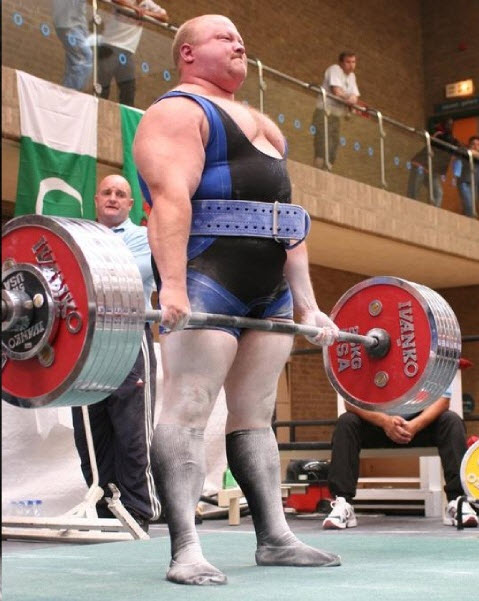Think about great powerlifters for a moment. Recently, I heard an interview with one of the best out there, who shall remain nameless, saying that if he raised his arm above his head it basically would pinch a nerve and he’d pass out.
I don’t know about you, but that’s not something that I want.
I’ve heard it said that powerlifters sacrifice thousands of movements for the sake of three.

While the bench press, squat and deadlift are great foundational movements, if you’re interested in health, and being able to move well as you grow older, then you can’t just do the basics.
What your body will respond to best is more variety and even complexity of movements. Here I want to talk about a few different ways you can look at adding this in and developing it further.
#1 Bodyweight Training
With your body as the resistance it becomes critical that you do variations of any exercise simply to progress with it.
So many people only know bodyweight training by the basics of pushups, bodyweight squats, sit-ups and chin-ups. And little else!
Once again, the basics are good, but here you MUST use variations in order to get progressively stronger. Adding more volume will only take you so far.
With chin-ups, you can do band-assisted, weighted, one arm, archer, commando, mixed grip grips, pulling to the sternum, towel, rope and many more.
With squats, you’ve got Hindu, sumo, pistols, shrimp, Hawaiian, feet together, plie, lunges and many others.
And if you get a little creative you can make up your own variations too. So, bodyweight training is one great area for variety.
Here’s some great resources to go far with bodyweight exercises.
#2 Kettlebell Training
Kettlebells are another great place. Once again, we have basics like the squat, press, row as well as a few exercises that are close to synonymous with kettlebells, the swing and getup.
One of my favorite places to add variety and complexity is through kettlebell juggling, which is the throwing, spinning, flipping and catching of a single kettlebell. (Double kettlebell juggling can also be done, and it’s not twice the difficulty but more like four times!)
This not only challenges the body, but the mind as well, as balance, coordination and timing are all involved, on top of strength and endurance.
It’s also a lot of fun. And it’s not as hard to get started as many people imagine. If you can swing a kettlebell you can get started with a two-hand flip with very little instruction.
But please, make sure you do this outside!
These free videos will get you started.
#3 Strongman Training
Strongman training can really be divided into two different types. There’s the modern strongman as you’ll see on ESPN, where big men compete for the title. There’s also oldtime strongmen which was more based on a display of strength, as in a performance.
Both are great and add possibilities for tons of movements you may not be doing.
Try carrying around heavy objects in a variety of ways. Yoke walks, kettlebell rack walks, overhead walks, a shouldered rock or barrel, and so many more.
I’ve talked to many a strong person who says that carrying should be considered a basic just like squats and deadlifts. It’s that important. The question is, is carrying in your program at all?
Find more in Strengthen Your Structure.
With oldtime strongman you often have many grip and hand training stunts. The hands can move so many ways so here there are thousands of things you can do. Grippers, pinching two plates together, and thick bar lifting are a few options.
Then you can get into feats of strength like nail and horseshoe bending, tearing decks of cards and phonebooks in half.
And everything I’ve mentioned only scrapes the surface of what is possible. I offer these ideas to you not to say you need to do everything, but instead to simply say you might want to do a bit more. Yet, you don’t have to do it all at once.
If you add just a new exercise or variation every couple of weeks, over times you can do a lot. That also doesn’t mean you need to keep doing old things all the time. This adds quantity and quality to your movement-ability. And that means you’ll be able to move well over time.
Everyone is familiar with the phrase “move it or lose it.” Well, let’s not focus on losing it and instead focus on gaining.
